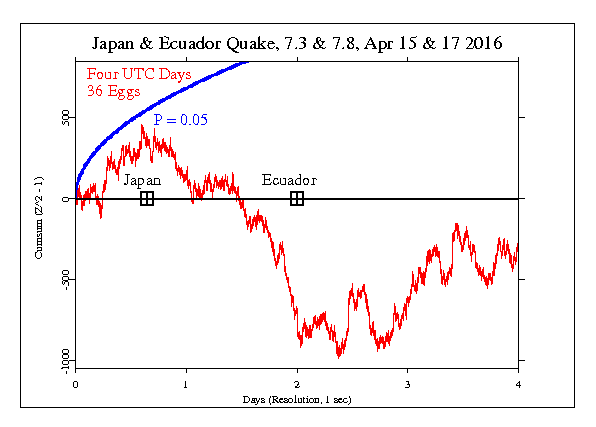Kumamoto Japan 7.3 Quake
A more powerful earthquake has rocked the southern Japanese city of Kumamoto in the middle of the night, a day after an earlier tremor killed nine people. The magnitude-7.3 quake hit at a depth of 10km (six miles) at 01:25 on Saturday (15:25 GMT on Friday) in Kyushu region. At least three people died and hundreds were injured. A village has been evacuated after a dam collapsed, media reports say. A tsunami warning was issued, and lifted some 50 minutes later. Japan is regularly hit by earthquakes but stringent building codes mean that they rarely cause significant damage. This new earthquake in Kyushu was much bigger and hit a wider area than the one that struck Kumamoto on Thursday night, says the BBC's Rupert Wingfield-Hayes in Tokyo. In one town near the coast, the city hall has been so badly damaged there are fears it could collapse. A hospital has been evacuated because it is no longer safe.
The quake was originally assessed as magnitude 7.1 but revised upwards to 7.3 later. Gavin Hayes, a research geophysicist with the US Geological Survey (USGS) in Colorado, told the BBC that the latest earthquake would hamper the earlier rescue operation that was already under way. He said more damage could be expected as the earthquake had been shallower and the fault-line had been much longer. "The ground surface would have moved in the region of 4-5m. So, you are talking very intense shaking over quite a large area. And that's why we'll probably see a significant impact from this event." The Associated Press news agency said guests at the Ark Hotel near the Kumamoto Castle, which was damaged, woke up and gathered in the lobby for safety.
Only a little more than a day after the Kumamoto quake, a very large 7.8 quake hit Ecuador. While I didn't set a formal analysis of this event, it is interesting to look at the data for the two together. A second figure below shows the data for both.
Specific Hypothesis and Results
The GCP event was set for 24 hours beginning at 15:00 UTC on the 15th following the standard practice for large quakes. The result is Chisquare 85829.17 on 86400 df for p = 0.915 and Z = -1.375
Interpretation
The following graph is a visual display of the statistical result. It shows the second-by-second accumulation of small deviations of the data from what’s expected. Our prediction is that deviations will tend to be positive, and if this is so, the jagged line will tend to go upward. If the endpoint is positive, this is evidence for the general hypothesis and adds to the bottom line. If the endpoint is outside the smooth curve showing 0.05 probability, the deviation is nominally significant. If the trend of the cumulative deviation is downward, this is evidence against the hypothesis, and is subtracted from the bottom line. For more detail on how to interpret the results, see The Science and related pages, as well as the standard caveat below.

The two quakes in close succession, on opposite sides of the world. What is most striking is that the data show a precipitous decline around and immediately following these separate but similar events.

Standard caveat
It is important to keep in mind that we have only a tiny statistical effect, so that it is always hard to distinguish signal from noise. This means that every success
might be largely driven by chance, and every null
might include a real signal overwhelmed by noise. In the long run, a real effect can be identified only by patiently accumulating replications of similar analyses.
